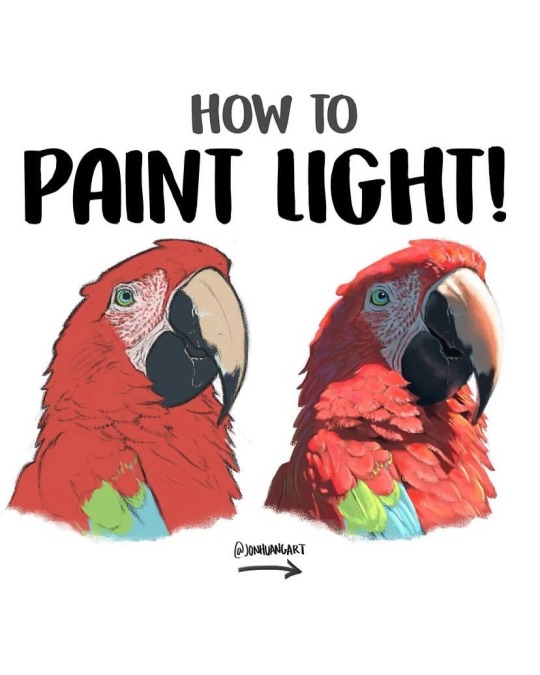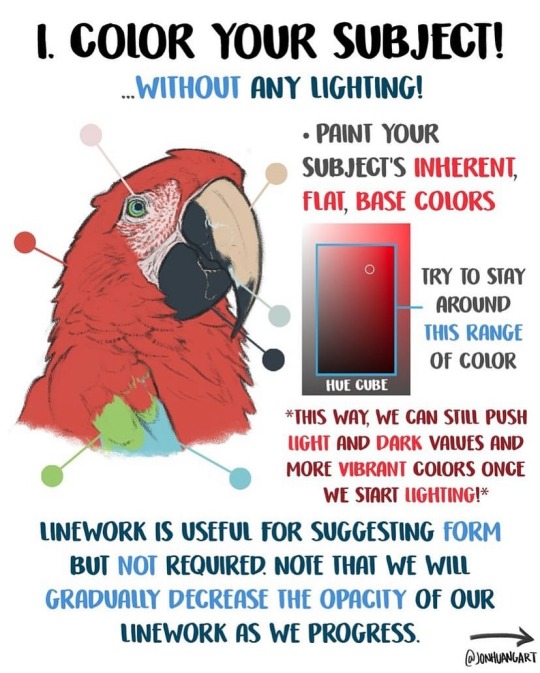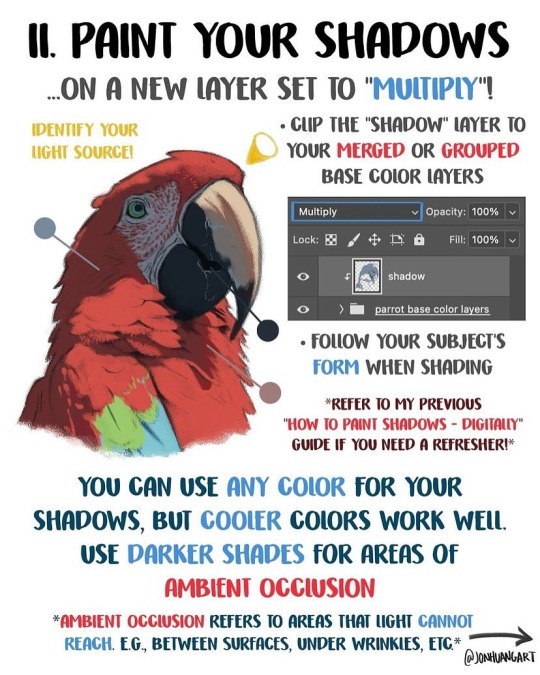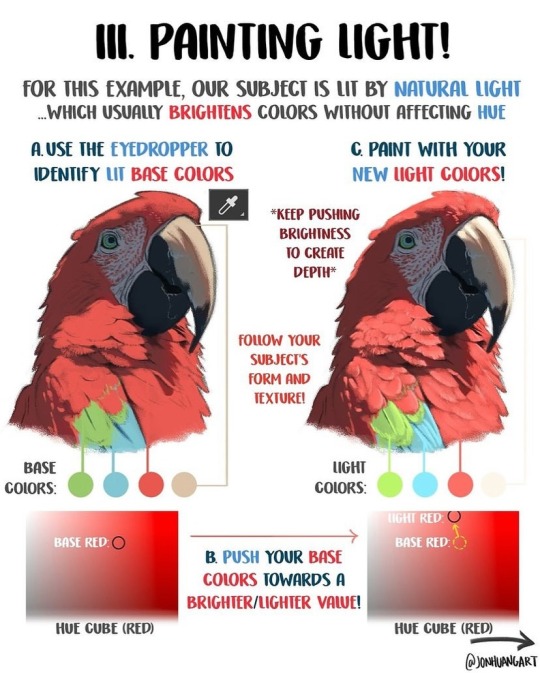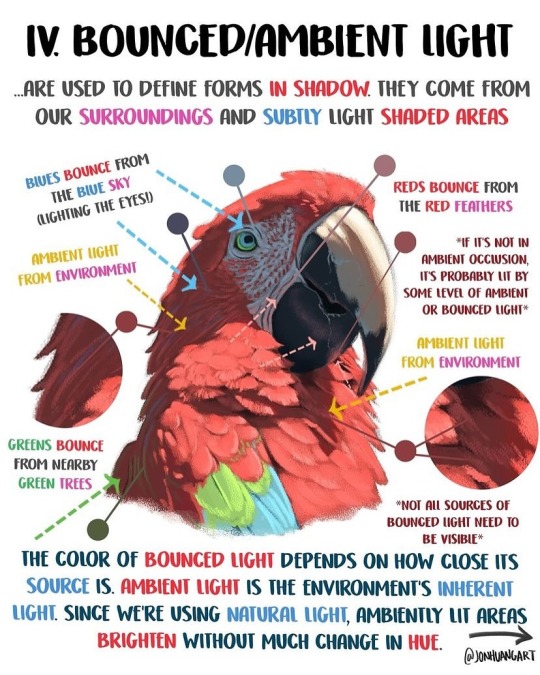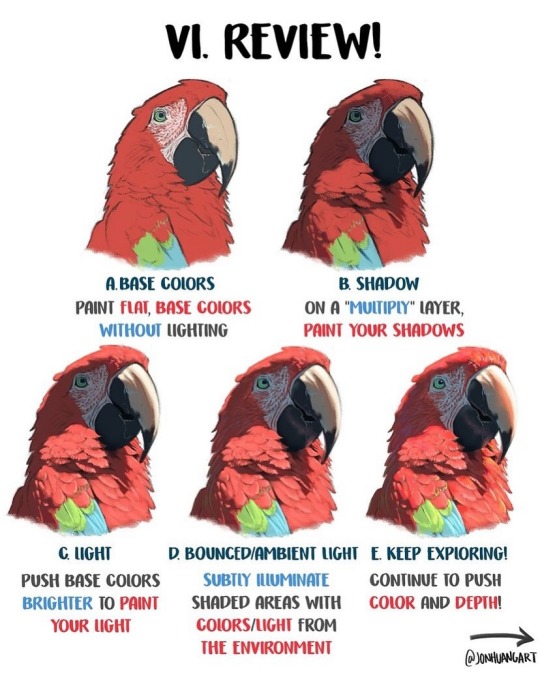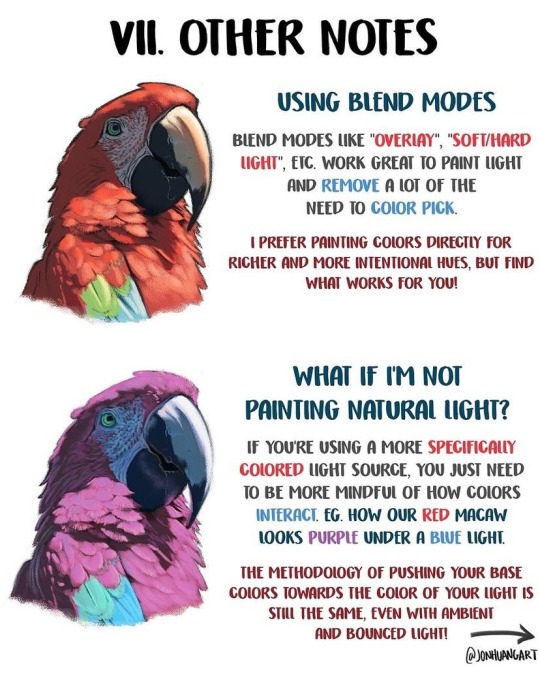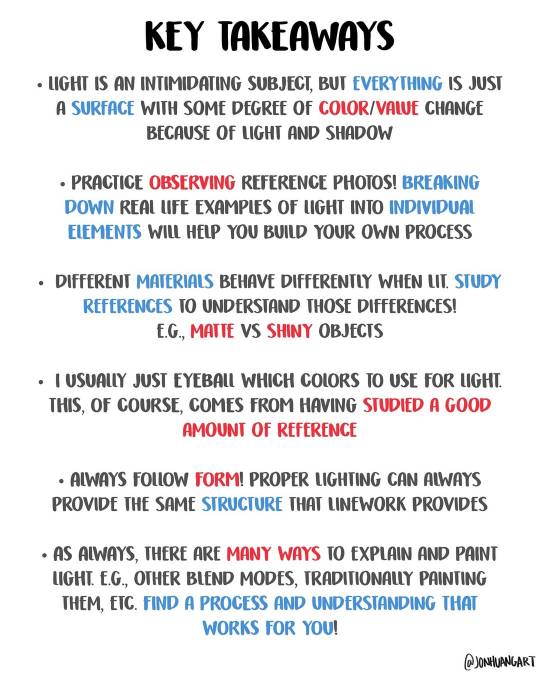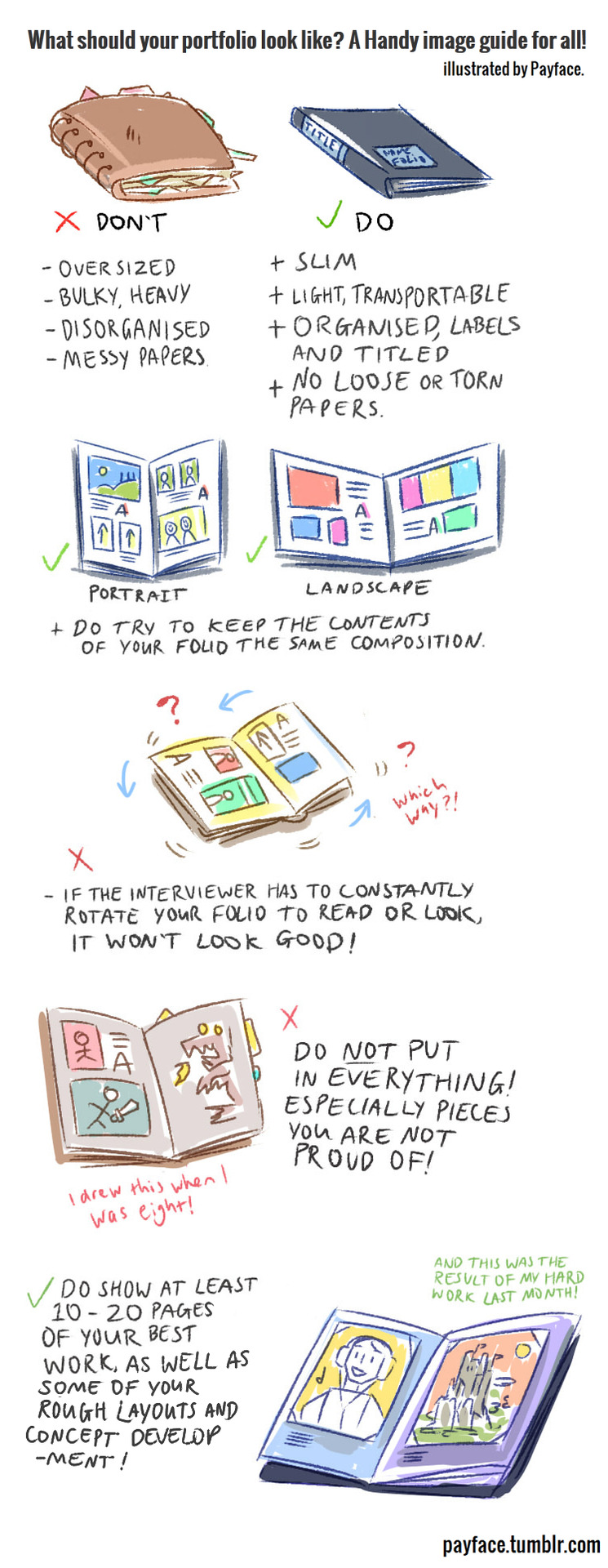Text
New CSP Brushes on my Gumroad!
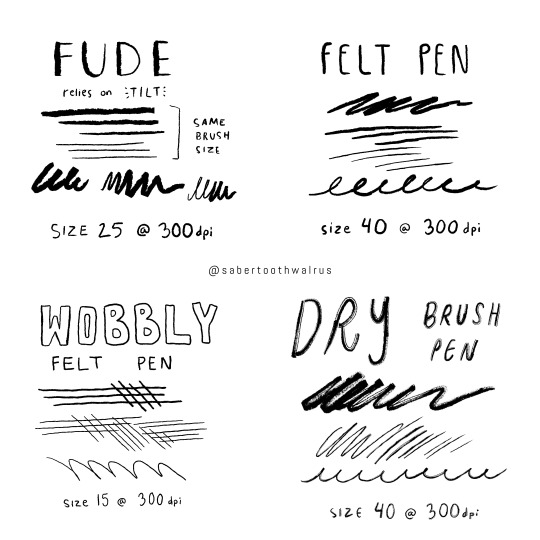
I made the textures by hand in my sketchbook. They're pay what you want with no minimum.
Enjoy!
10K notes
·
View notes
Text
What do you all study when you're doing art studies??
28K notes
·
View notes
Text
RadenWA is honestly a hero for these
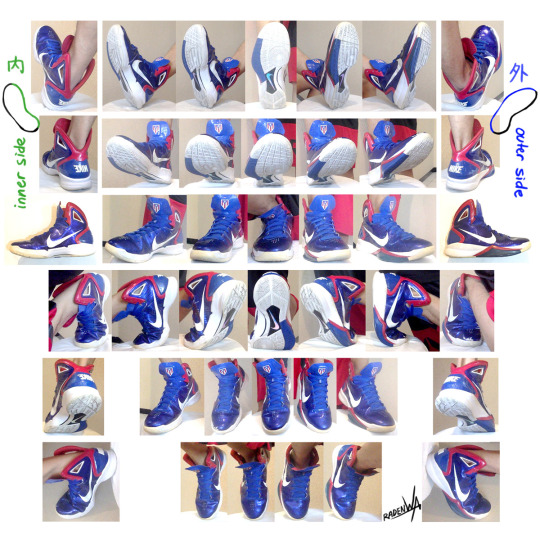
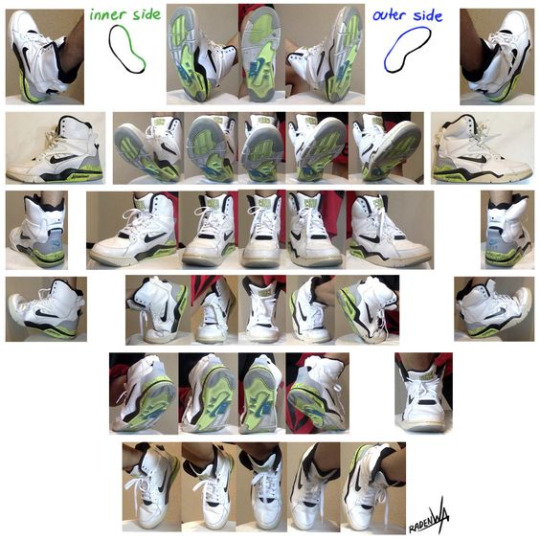
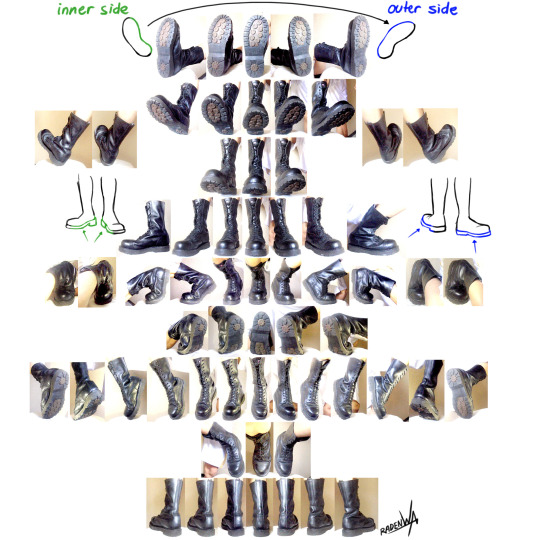
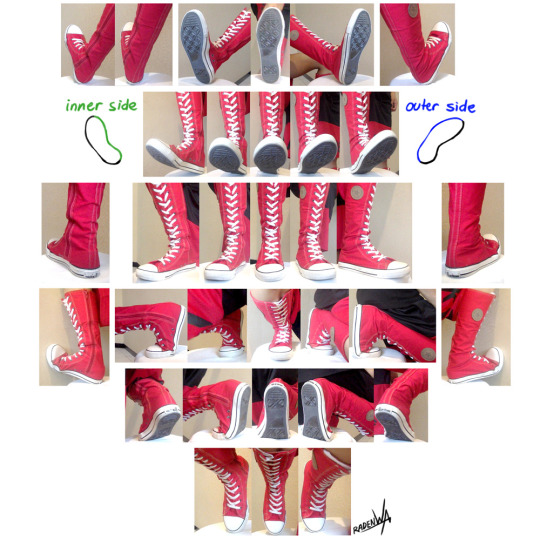
they're got even more than these, too!
36K notes
·
View notes
Note
how do you go about learning new languages?
i've tried duolingo in the past but asides learning a few phrase i don't think i learned that much
You must read this book

11K notes
·
View notes
Text

Oc challenge won I shall start that soon!
58 notes
·
View notes
Text
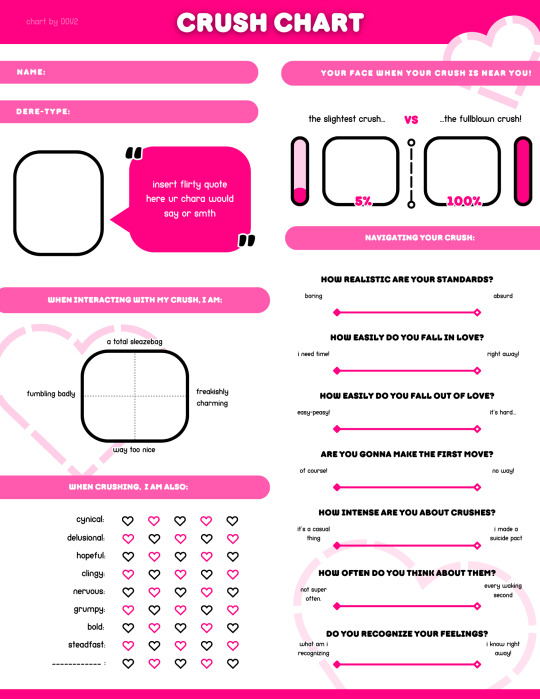
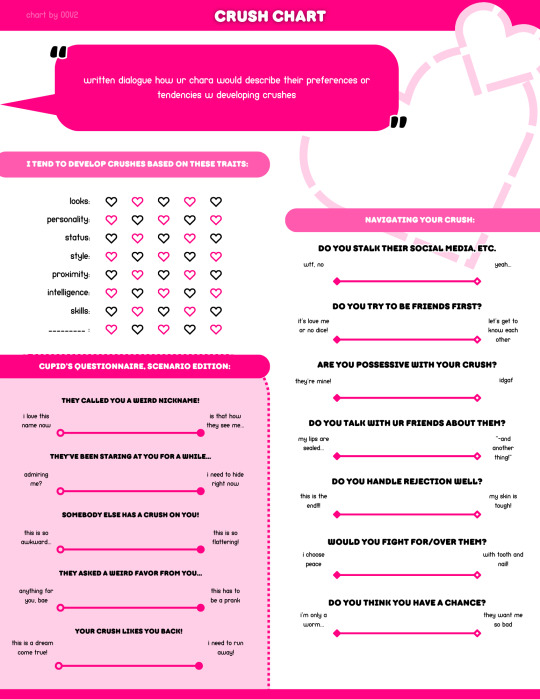
realized i forgot to post this from my twitter… but i made a crush chart for character crush dynamic related needs
feel free to use, don’t remove my credits 🫶
930 notes
·
View notes
Text

LINK: tinyurl.com/oldgaySF
I'd like to share with y'all a project I've poured my heart and soul into over the last couple of years: a database cataloguing every single older queer science fiction book I've managed to track down, consisting of just over 200 titles with LGBT characters/themes & by LGBT authors, spanning over a century (1880-2000) 🚀
The database can be filtered by representation, subgenre, whether the book is currently in print, and more; additionally, it includes my own ratings & brief thoughts on the ones i have read, if anyone needs a suggestion on places to start! (or feel free to shoot me an ask for a more personalized recommendation)
6K notes
·
View notes
Text

i know we joke about cis artists having the weirdest sense of anatomy, but also even when the anatomy is fine, no one seems to want to draw women doing normal things
170K notes
·
View notes
Text
Writing existing character voices for fanfic
Hey, so, I started doing a writeup a week ago about how to get character voices in your fanfic to sound “in character,” in response to a comment from a new writer I was beta-ing for.
I’ve been told this is a thing I do well.
As someone who studied dialogue extensively for a theatre degree, I tend to do this reflexively now, and I don’t write out each individual step. But I put some thought into how I might break down the process if I was new at it and looking to get better.
I don’t think it’s actually that different than an actor studying character accents, except as a writer you’re breaking down meaning rather than sound.
Let’s take a look at what makes dialogue unique to a character. I’m gonna list these as bullet points first, and then I’ll suggest some exercises to explore these aspects of speech.
Most important aspects - focus on these first
Vocabulary - the words they use. As subset of this:
Complexity of words, which can include:
Syllable length
Likelihood to be used in casual conversation - a character can be very smart and still use very informal language.
Cultural touchpoints
Culture can include pop culture references - think Tony Stark’s nicknames for everyone, i.e. “Point Break” and “Underoos”
How in or out of sync the character is with the story’s setting with regard to both time and place - are they from a different country or era of time than their peers?
Important - Check these out if you have time
How likely the character is to speak their mind vs. change the subject - this could be for any number of reasons, from fear to duplicity
Amount they say / Introvertedness / how reticent they are - This is somewhat related to the above point, but not necessarily, and should be researched from different angles. Subverting a topic is not the same thing as being afraid to talk about it.
Different ways of speaking with different characters - this could be a function of story (i.e. how a character who is captured speaks to their captors as opposed to friends) as well as pure Code Switching
Deep cuts - Advanced aspects of speech
Fluency in the language they are speaking
Accents - You do not have to write a character in an accent, i.e. spell the words differently to show the accent, if you don’t want to. It really depends on the piece (usually how light hearted or humorous you want it to be) whether you do or not.
Okay, this is all well and good, you say. But HOW do I incorporate this into my writing?
Dialogue analysis exercise
Find five (or more, but at least five) representative lines from your character’s canon dialogue.
If they don’t speak, don’t have five lines, do the best you can. (I imagine other forms of communications can probably also be analyzed in this way, but I’m gonna focus on dialogue for now.)
These are going to be your key phrases. They need to be from canon and they need to be words that really show off who your character is.
Say the words out loud. Read them again and again. What do they sound / feel like?
What is the average syllable length? How many long words do they use?
Do any words jump out at you as archaic? What about modern pop culture references?
What is a different way they could have said this? Write some alternate versions of this phrase and figure out WHY the character didn’t say it this way instead. What is the difference between the canon dialogue and the alternative? Try to be as specific as possible. It’s as important to know what they wouldn’t say as what they would.
Look up any of the more complex words and find some similar ones, with a similar level of complexity. Use a thesaurus you trust and possibly also Wordnik. If your character doesn’t use ANY complex words, reflect on that. Why? What’s their reason? How does that fit with the rest of their personality?
Think of some other characters from other pop culture pieces who speak in a similar way. It doesn’t have to be 100% the same, but if it can help your ear get used to some new-but-different phrases, it’s enough. You’re training your brain to speak like the character. Start to sort phrases they would say from ones they wouldn’t. How do these two characters differ?
Now that you have worked thoroughly through your key phrases, start to imagine these lines said in something other than the original context. What if they were said to a different character? WOULD they even be said? What would change? What would happen if your character was scared / hurt / overjoyed / sick?
Finally, after all that, write some NEW dialogue for your character, either as practice, or right into your fic draft. Keep using your key phrases as a guide and go back to canon as much as you need to! You can do this!
After all of this, you should feel significantly more confident in writing that existing character into your story. Huzzah!
If you found this at all helpful, reblog and / or leave me a note. I’m curious to hear what you think.
4K notes
·
View notes
Text
Part 3: Combining shapes, braids, and textures! And utilizing parts and fros!










15K notes
·
View notes
Text
Okay I JUST realized I never posted these on here—- BUT BASICALLY, about a year and a half ago I started doing these experimental black hairstyle posts that were threads long on Twitter, to give artists a source of inspo for their black ocs whose hair they wanted to try something new with! There’s more to black hair than just the selected styles portrayed in media, and I thought it would be fun to show people how much texture, shape, fades, length, and style can be combined when drawing black hair—-cause it’s a kind of manipulation our hair can do irl! The OG posts were lost with the hacking of my original Twitter account (@/bagels_donuts) but I’ve since reuploaded the whole thread to my new Twitter (@/ItsDonutsFR)! I hope artists on tumblr find these useful, sorry it took me so long to post them here😭🙏🏾 I’ll upload them all in parts!








Part 1: Long masc hairstyles + playing with fades
51K notes
·
View notes
Text
Two job-hunting resources that changed my life:
This cover letter post on askamanger.com. A job interview guide written by Alison Green, who runs askamanager.
252K notes
·
View notes
Text
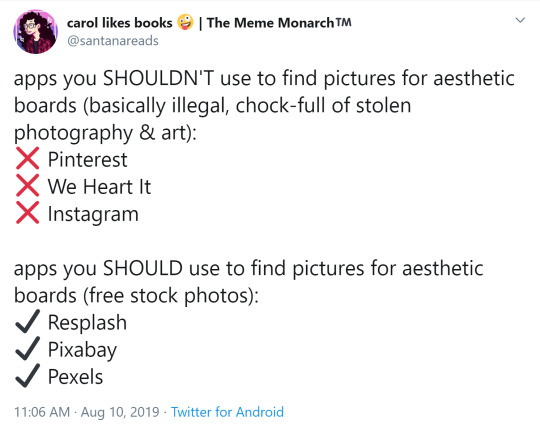
(source)
Unsplash - photography, illustration, and art
Pixabay - same as unsplash
Pexels - stock photos and videos
Stockvault.net - stock photos
freepngimg - icons, pictures and clipart
Veceezy - vectors and clipart
Kissclipart and kissPNG - more vectors and clipart (often transparent!)
Getdrawings - simplistic images and drawing tutorials
Gumroad - photoshop brushes (and more)
Canva - needs login but has lots of templates
Library of Congress - historical posters and photos
NASA - you guessed it
Creative Commons - all kinds of stuff, homie
Even Adobe has some free images
There are so many ways to make moodboards, bookcovers, and icons without infringing copyright! As artists, authors, and other creatives, we need to be especially careful not to use someone else’s work and pass it off as our own.
Please add on if you know any more sites for free images <3
394K notes
·
View notes
Photo


Color palette tutorial time!
This is by no means the Only Way To Pick Colors—it’s just a relatively-simple method I use sometimes. I’ve found it works pretty well, almost regardless of what colors you pick—as long as you can keep them organized by those light/dark warm/cool categories, and make sure one category takes up a significantly higher proportion of page space, it usually turns out pretty good!
94K notes
·
View notes
Text
How I Study Anatomy
Everyone says NEVER TRACE!! THAT'S ART THEFT! Ok but we can do a little crime in the name of Learning.
Trace to learn, not to earn.
I like to take my own photos, but you can study whatever you want. Link back to original photos, and don't post copied artwork unless the artist is dead, cool with it, or both.
As always with learning, start every sketch with the intent to throw it away (trash for paper, quitting without saving for digital) This takes the pressure off and lets you make Bad Art, which is very important.
So let's make Bad Art of a Deer because I happen to have one handy
Start with a photo of your subject in a nice/neutral pose with all four feet visible. (so not like me)
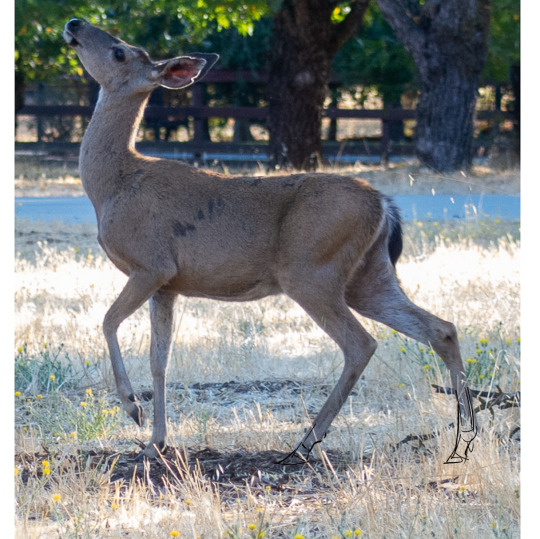
Freehand copy it. Try not to stylize, focusing instead of matching proportions and pose. Don't get too detailed!
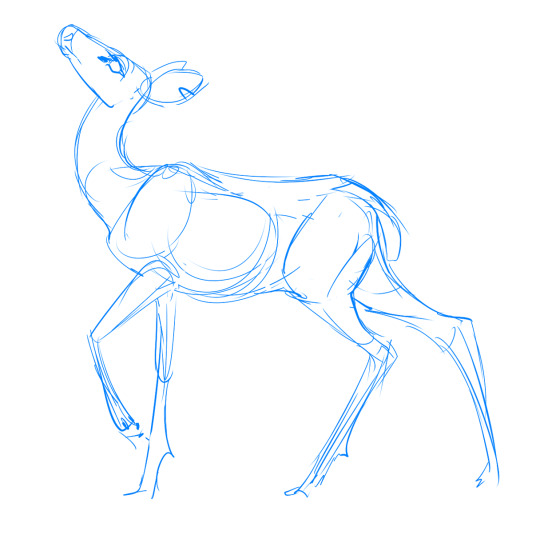
It's ok if your art looks terrible and has broken legs. I've drawn LOTS of deer so I have a leg up. Everyone's art sucks in their own eyes and here's where mine went wrong:
Either lasso-distort (recommended for beginners) or redraw a copy of your first sketch with your reference behind it (scaled to match the main body of your sketch)
Put the original and modified sketches together and compare the differences. Write it down if you want. This shows you where your eyes saw things the wrong size, so you can correct for that next time.
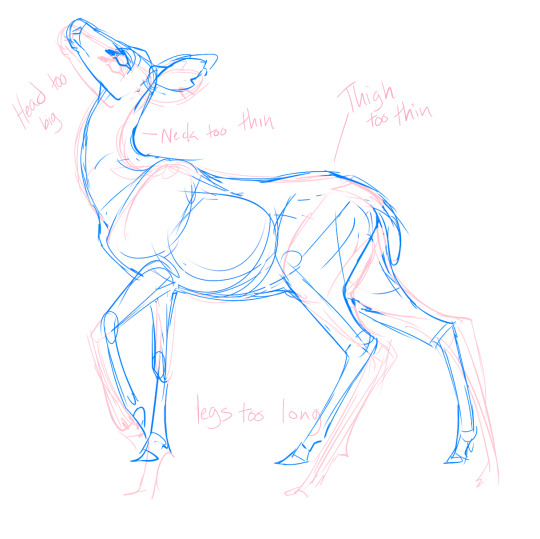
After learning about both deer and yourself, try freehand copying again.
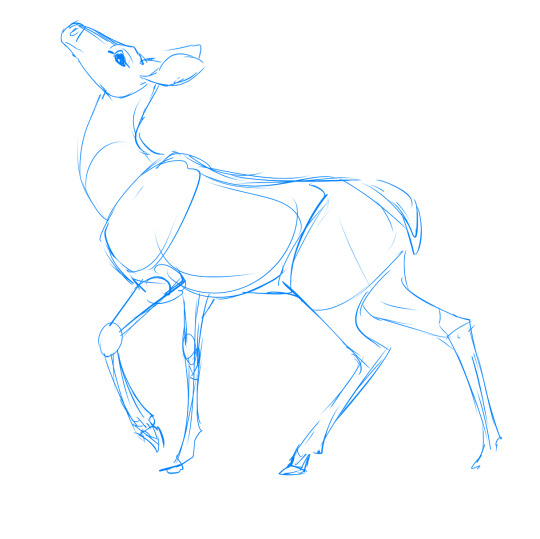
Marvel at your newfound knowledge and skill!
but there's always room for improvement
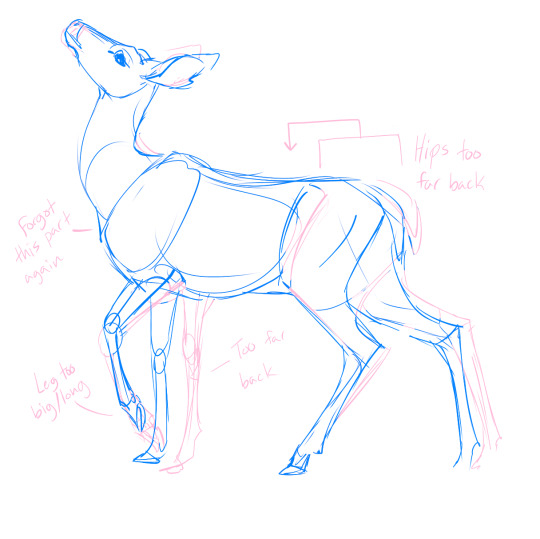
You can stop here and move on to your real drawing, Or do another freehand-fix-compare cycle. I actually overcorrected my "draws heads too big" and veered into "heads too small."

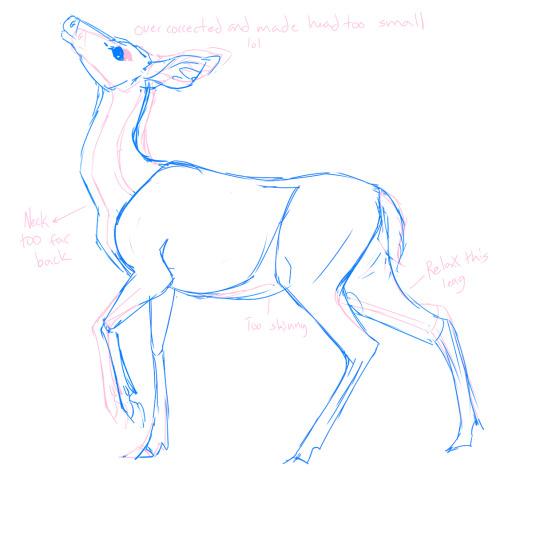
Another note on tracing: Learning HOW to trace is more important than anything you could learn By tracing. Draw the Anatomy, not the outline. In real life, things don't have outlines, they have bones.
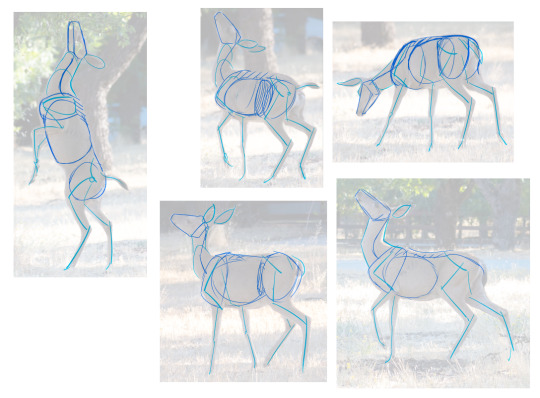
These are from the same shoot which is extra useful for consistency. The lines are minimal and follow where the animals joints are, and only important parts are drawn.
You won't know what Important Parts means right off the bat, which is where in-depth study comes in. You need to do learn the hard parts to do the easy parts right.
Next up: how to study bones and muscles.
30K notes
·
View notes
